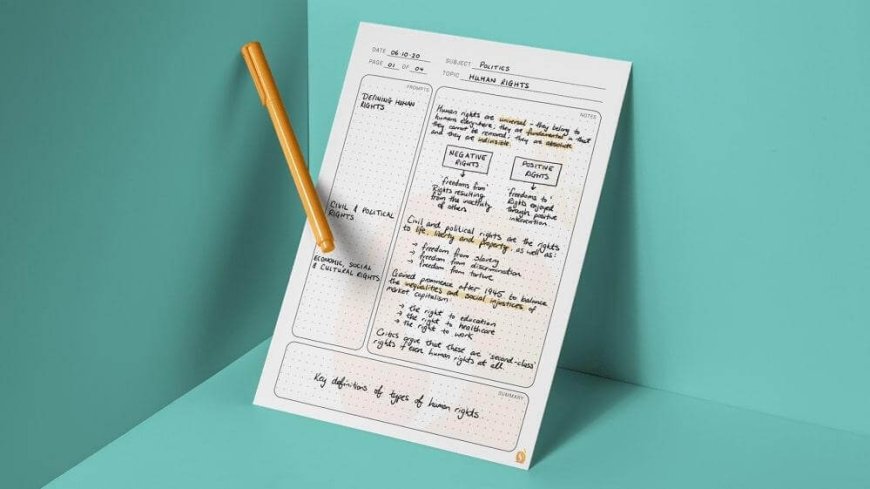How to take notes? 3 effective methods
the information we have collected. Learn how to take notes in college and school with our effective note-taking methods. How to take notes.

Not everyone knows how to go about taking notes well. Chaos in notes does not encourage learning, especially when we have a problem with reading ourselves and systematizing the information we have collected. Learn how to take notes in college and school with our effective note-taking methods. How to take notes.
Notes - how to make them right?
Are you reluctant to look at your notebooks? Having trouble deciphering the information you wrote down during a lesson or lecture? You probably don't know how to take notes correctly. Before we move on to effective quotation methods, please read a few rules that will help you learn later:
- Highlighter is your friend - it is best if you have several highlighter colors, which you will highlight specific information, e.g. dates in green and quotes in pink. However, be careful that you do not get the illusion that you already remember what you have circled.
- Use graphic forms - don't hesitate if you need drawings in your notes. A picture combined with a word is best perceived by our brain and contributes to better remembering.
- Make revisions - do not forget to read your notes regularly if you want the knowledge to stay in your long-term memory.
Listing methods - hierarchical technique
The hierarchical technique is very often used for taking notes. It consists in arranging information in such a way that one follows from the other. The first, key issue is written on the left side, and the next, more detailed ones in new lines. Subsequent paragraphs move more and more to the right. The more detailed the information is, the further it is from the left margin. By writing notes in an orderly manner, you can remember them instantly. Unfortunately, this method of taking notes will not work in every case - especially if the information is not given from general to detail during a lecture or lesson.
Listing techniques - Cornell's method
Cornell's method is one of the note-taking techniques to which the previous artical was devoted. It consists in dividing the card into 4 parts, in which we write:
Must Read: Studygram “ what is it and where does its popularity come from?
A - Lecture title;
B - Proper notes, i.e. facts, detailed information and main thoughts;
C - Keywords, terms and questions;
D - Summary which is prepared approximately 24 hours after the end of quotation.
If you don't know how to take good notes, the Cornell Method may be the perfect choice for you. It not only allows you to organize information logically, but also facilitates subsequent learning. The advantages of this note-taking technique include easy finding of the most important issues, the ability to modify it for your own needs, faster memorization, and keeping your notes in order. However, it may not work well in lectures and lessons that are conducted at a fast pace.
Methods of effective quotation - the star of associations
The association star is, in turn, a quick note method that uses the keyword technique and takes the form of aesthetic graphics. It consists in writing down a keynote in the middle of a piece of paper, and then drawing lines from it that lead to more detailed issues. This note-taking method is very similar to the mind map technique we wrote about in the article "How to learn quickly and effectively?" Information structured in this way is more legible, has a clear form and is aesthetic. So if you're wondering how to take nice notes, the Association Star method might be perfect for you.
